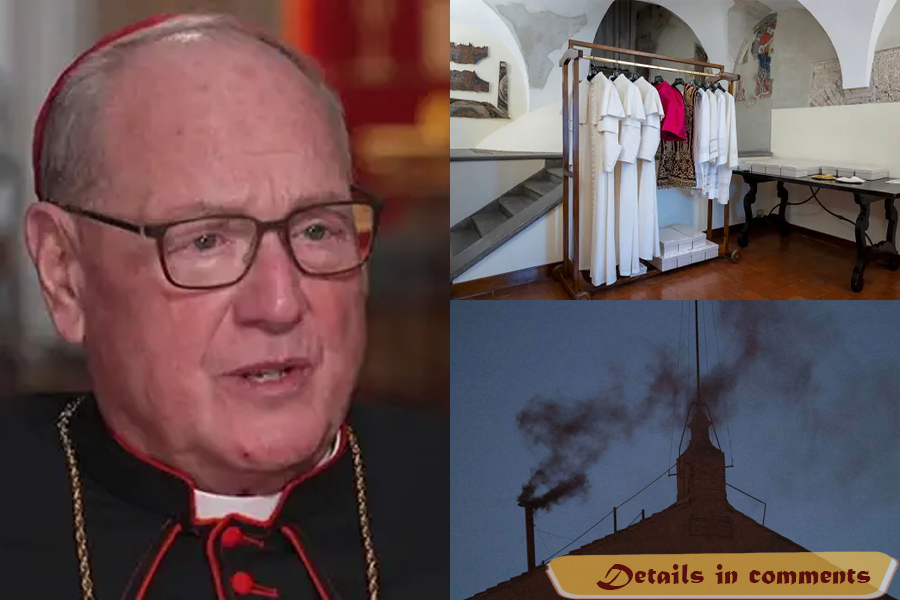
The College of Cardinals began meeting Wednesday to vote in a papal conclave — a secret ballot where two-thirds majority is required for the election of a new pontiff. After each round of submissions, ballots are read aloud and then burned. The ashes are used to notify audiences around the world and onlookers in St. Peter’s Square of the election’s status.
incoming update…
‘Room of Tears’ deceiving as robes await unnamed pope’s joyous moment
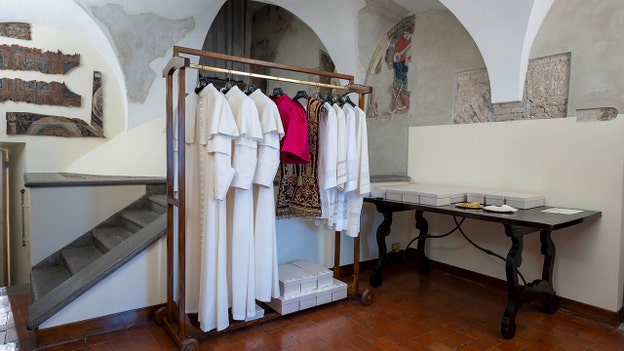
Photo by Vatican Media via Vatican Pool/Getty Images
Cardinals from around the world are participating in the papal conclave at the Sistine Chapel, and in the “Room of Tears” are various sizes of dress to ensure a proper fit on the new pope.
After two weeks since the death of 88-year-old Pope Francis, 133 cardinals entered into the Sistine Chapel on Wednesday to begin the selection process.
The voting, which occurs behind closed doors, will continue until a new leader of the Catholic Church is elected.
Only after receiving a two-thirds majority vote will the new pope enter into the “Room of Tears” where he will find his new attire in different sizes in the Vatican City.
What is the ‘Room of Tears?’
Once the new pope accepts his nomination and has chosen his papal name , he will enter the “Room of Tears” ( “Stanza della Licrime.) According to the Catholic News Agency, the room is known by this since it’s the first place the new Pope will go to face the reality of his new position. Pope Leo XIII reportedly wept upon entering the room in 1878.
According to the Associated Press the room is named for the emotional weight of responsibility ahead for the new pontiff. Known in Italian as “Stanza della Licrime,” it’s just a few feet away from the Sistine Chapel.
It’s in this room where the Pope will change from his red cardinal vestments to his new, white papal ones. There are various sizes available to accommodate whoever the pope may be.
In this room, the newly elected pope will have a short amount of time to reflect on his decision to accept his new role, and position before he gets introduced to the world, and greet the thousands waiting in St. Peter’s Square and millions watching from around the globe.
Jacqliene Mangini and Fox News Digital’s Nick Butler contributed to this report.
NYC Cardinal Timothy Dolan could be in contention as next pope
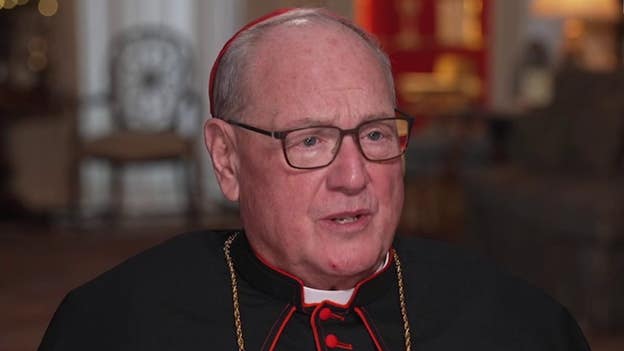
Timothy Dolan (Fox News/Screengrab)
While cardinals continue to determine who will lead the Catholic Church into the coming years, Cardinal Timothy Dolan of New York City could be in contention as the next pontiff.
Fox News contributor Jonathan Morris said in a post on X Dolan is originally from St. Louis, served as a diocesan priest, went on to become an archbishop in Milwaukee, Wisconsin and ultimately landed in New York City, where today he serves as a cardinal.
Dolan, at the age of 75, may sound like he is on the older side of becoming a pope, but the last two pontiffs were 78 and 76 when they were elected to serve, Morris continued to explain, and both had “relatively long pontificates.”
Pope Benedict was elected to the papacy in April 2005 and stepped down in February 2013 at the age of 85. He died in 2022.
Morris’ guess is that the cardinals do not want to elect a very young pope, admitting that was just his own take.
So when it comes to Dolan, he continued, the cardinal is a great communicator of faith who talks about Jesus in a way Catholics and non-Catholic Christians can understand and get behind.
Morris said that while Dolan may not have many votes at the beginning, the goal is to get a two-thirds majority. The candidate may not get the first vote, but eventually, Morris added, people will say that the cardinal is someone they can get behind, even if he was not their first vote.
Posted by Greg Wehner
Papal conclave: Eventual new pope’s chosen name may signal what’s ahead
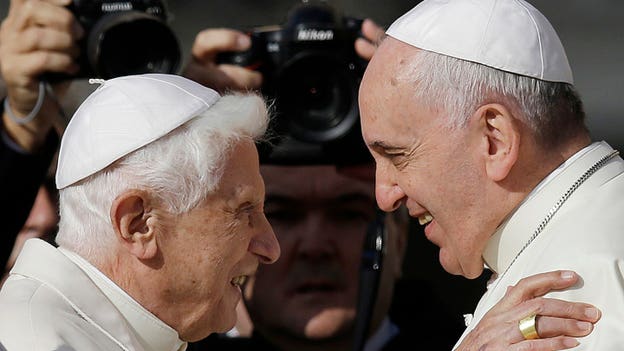
Pope Francis, right, greets Pope Benedict XVI prior to the start of a meeting with elderly faithful in St. Peter’s Square at the Vatican on Sept. 28, 2014. (AP Photo/Gregorio Borgia/File)
Once a new pope is voted in, the name he chooses could signal the direction the Catholic Church moves in the coming years.
The announcement “Habemus Papa,” or, “We have a pope,” will be made from the balcony of St. Peter’s Basilica. It will then be followed by the pontiff’s baptismal name in Latin, along with his chosen papal name and meaning.
Should the pope choose to go with Pope Francis II, it could signify continuity with the late pontiff’s pastoral legacy, though Francis himself quipped that whoever succeeds him would be John XXIV, named after the Vatican II-era pope.
Find out more about the importance of a pope’s chose name.
Posted by Greg Wehner
Pope Francis’ election as pope came as a shock to some Catholics
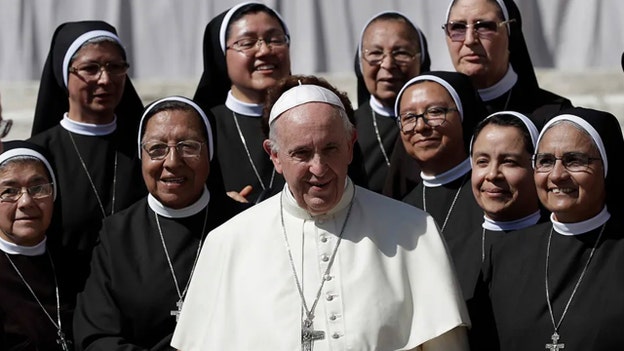
AP
The 2013 election of Argentinian Cardinal Jorge Bergoglio, who would go on to choose the regnal name of Francis, surprised many, Catholics included. Pope Francis was selected just 24 hours into the conclave and five ballots in. Shortly after his election was announced, Dr. Gilberto Cavazos-Gonzalez, then visiting professor at the Pontifical University Antonianum in Rome, reacted that the decision was “so out of left field” but that he was “tearing up” with joy over that a Latino had been selected to lead the church.
Francis came as a surprise to many for several reasons, including that it was the first time in history that either a South American or a Jesuit had been elected pope. What’s more, Francis’ name was not consistently featured on the shortlists of possible candidates.
WHO COULD BE THE NEXT POPE?
Many expected Francis’ successor would share the conservative, more traditional vision of Pope Benedict XVI, Francis’ predecessor.
Shortly before Francis’ election, American author and theologian R.R. Reno told Fox News Digital that because “the entire College of Cardinals has been appointed by Pope John Paul II and Benedict XVI” it was “extraordinarily unlikely that the next pope will not reflect their collective interpretation of the council, which means in worldly terms, a conservative pope.”
Posted by Peter Pinedo
Where are Cardinals flying in from to vote on a new pope?
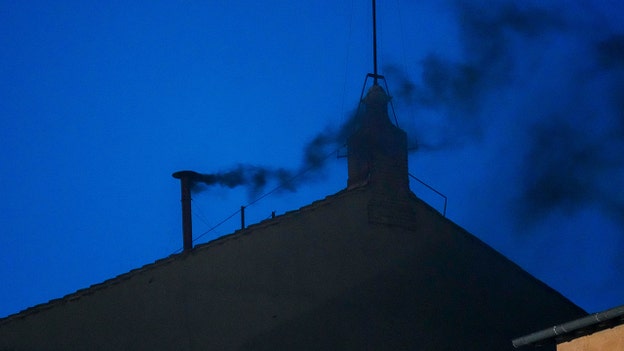
Black smoke billows from the chimney of the Sistine Chapel, where 133 cardinals are gathering on the first day of the conclave, indicating that a successor of late Pope Francis was not elected, Wednesday, May 7, 2025. (Gregorio Borgia/AP)
The tens of thousands of spectators waiting in Vatican City for a new pope to be elected learned late Wednesday that the vote will continue, after black smoke billowed from the chimney installed on the roof of the Sistine Chapel.
One hundred thirty-three Cardinals from 71 different countries across the globe gathered in Vatican City to begin the Conclave to elect the new Pope. The process began on May 7, 2025 at the Sistine Chapel, which is now closed to the public.
Former Pope Francis was instrumental in making the College of Cardinals less eurocentric by expanding it to include more cardinals from other continents.
Fifty-three Cardinals from Europe, 37 from the Americas, 23 from Asia, 18 from Africa, and four from Oceania will be present at the Conclave. Cardinal and Archbishop of New York Timothy Dolan will be in attendance as one of 10 Cardinals from the United States.
For the first time, 15 nations will be represented by native Cardinal Electors hailing from Haiti, Singapore, Serbia, Papua New Guinea, Cape Verde, the Central African Republic, Myanmar, Rwanda, Tonga, Malaysia, Sweden, Luxembourg, Timor Leste, Paraguay, and South Sudan. The age range of the Cardinals spans generations, from the youngest being 45, Mikola Bychok of Ukraine and the oldest being 79, Carlos Osoro Sierra from Spain.
The Conclave will continue on Thursday, when the Cardinals will be able to vote up to four times before retiring until the next day.
Jacqliene Mangini contributed to this report.


